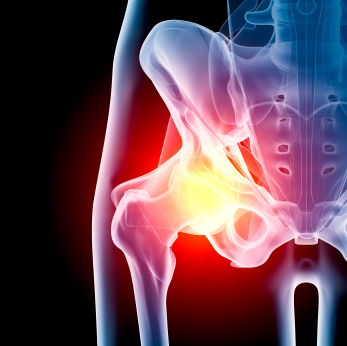This article by a Consultant Orthopaedic Surgeon presents an overview of the latest advances in hip surgery and provides advice for anyone considering whether a total hip replacement, hip resurfacing or preventative hip surgery would be best for them.
Contents
- Introduction
- Minimally invasive surgical approach
- Orthopaedic materials
- Hip resurfacing
- Preventative hip surgery
- Cartilage transplantation
- Enhanced recovery
- Why choose an experienced surgeon
Introduction
Hip replacement surgery remains an exciting and constantly advancing branch of Orthopaedic Surgery. With people living longer, partaking in more extreme activities and expecting to lead an active life well into their later years, it is important to provide them with high performing implants which can be adapted to suit their specific needs. It is equally important to monitor the implants once inserted. This is currently relevant in light of the recent scandal with PIP breast implants. The National Joint Registry of England and Wales (NJR) was set up in 2003 to do just that.
In 2011 the NJR reported that there were 77,800 total hip replacement operations. Whilst most procedures were carried out on older patients, 35% of patients were less than 65 years of age. In my own practice I too have noticed an increasing number of patients aged between 40 and 50 years presenting with degenerative joint disease. The reason for this is not entirely clear but it is thought that participating in extreme sports as well as an increasing body weight with time, may well be contributing factors.
Hip replacement surgery today focuses on three areas:
- Advances in implant materials
- Shortening patient stay
- Identifying techniques which will delay the onset of arthritis
This article gives an overview of the key areas of interest in hip surgery.
Minimally invasive surgical approach
The main approaches for inserting a hip replacement prosthesis remain the posterior and anterolateral approaches. No approach is advantageous over the other. Surgical experience is the most important thing with either approach. In the last ten years increased attention has been placed on minimising soft tissue dissection in order to minimise trauma, reduce blood loss and fasten recovery. In addition there is an improvement in the cosmetic appearance of the scar. Minimally Invasive Surgery which I offer, achieves this. This surgery involves a scar less than 10 centimetres though this is relative to the patient’s body shape.
Orthopaedic materials
The current emphasis is on the use of biocompatible materials as well as materials that are tough and generate minimal wear debris. Wear debris stimulates an inflammatory reaction that can ultimately lead to loosening of the prosthesis hence it is important to minimise this. Materials that have properties similar to bone such as titanium are used for inserted components. The bearing surfaces of prostheses require tough materials such as Cobalt-Chromium and Ceramic. Ceramic is the most resistant to wearing and produces minimal wear debris. Ceramic can be used for both the acetabular (hip socket/cup) liner as well as the head for the stem. Polyethylene, a common component of the cup, is produced in a toughened form by irradiation and other methods to reduce its wear debris. The toughened materials are more costly than standard components and hence provided to patients with high activity demand. In my practice I use an un-cemented cup with a strengthened polyethylene liner and a cemented stem (Exeter), with a metal head in patients over 65 years and an un-cemented total hip replacement with ceramic bearings in younger patients. Anatomical variations sometimes preclude this and treatment is then tailored to the patient.
The anatomy of men and women are different in terms of bone size, shape and strength. Gender specific implants are being explored, but at present there is insufficient data available to support their benefit over conventional implants.
Hip resurfacing
This replacement prosthesis comprises a metal cup articulating with a large metal head. It is inserted after minimal bone removal at the time of surgery. Whilst there are advantages to leaving as much of the patient’s bone intact such as a reduced risk of dislocation from the larger head sized prostheses and in the case of future surgery, there have been concerns highlighted in the last five years with this prosthesis. Published Orthopaedic data, backed by NJR findings, suggests that hip resurfacing prostheses do not survive as long as conventional hip replacements. There remains concern over the risk of metal ions released into the blood stream and the significant inflammatory reaction caused to surrounding tissues from the metal debris generated. This prosthesis should be avoided in women of childbearing years. The ASR resurfacing prosthesis has been withdrawn from the market due to catastrophic complications with use in both sexes. Of all the hip resurfacing prostheses, the Birmingham hip resurfacing has the best survival rates.

In my practice, the hip resurfacing prosthesis has limited indications and I use conventional components whenever possible.
Preventative hip surgery
Orthopaedic Clinicians now have a better understanding of the development of hip arthritis. A specialised structure around the acetabular (socket) aspect of the hip known as the labrum is important in this process. Injuries to the labrum make the cartilage in the socket susceptible to injury which then leads to arthritis. There may be abnormalities in the bone around the hip that make labral tears more likely (femoro-acetabular impingement lesions).
This understanding has led to a huge expansion in the techniques available to treat labral tears and bone abnormalities. Initially these structures were treated by open surgical procedures. Increasingly arthroscopic (keyhole) procedures are becoming more popular. This is an area of rapid expansion in Orthopaedics. There are only a few long-term data studies available but early results are promising.
Patients with labral tears may experience a catching pain in the groin or buttock, particularly on rotary movement. There may be associated clicking and a feeling of instability. Labral tears occur most commonly in men in their mid thirties and women in their early forties associated with femoro-acetabular impingement lesions, though can occur later in association with arthritis. Only labral tears identified early are likely to be repairable. Extensive tears can only be debrided. As repaired labral tears have a better clinical outcome compared to debrided lesions, early presentation to a hip specialist if you are experiencing pain is advisable. I am able investigate and treat patients with this condition.
Cartilage transplantation
Cartilage transplantation is an area currently being researched for isolated cartilage defects in the hip. The first such operation was performed in Germany in 2010 for a cartilage defect following a hip joint coming out of its socket. This procedure is still regarded as experimental and is not currently available.
Enhanced recovery
Lifestyle demands, better fixation for prostheses and less invasive surgical dissection all lend themself to earlier discharge from hospital for patients. Equally important to the surgery is the education of the patient ensuring realistic expectations post-operatively, adequate analgesia and post-operative physiotherapy. I work closely with a multi-disciplinary team to achieve early discharge from hospital; and post-operative pain is reduced by intra-operative local anaesthetic injections around the hip joint. This, in conjunction with oral medication, reduces the requirement for opioids such as morphine which are associated with drowsiness and nausea.
Why choose an experienced surgeon
In order to minimise the risks of surgery such as nerve injury and dislocation, and to have a replacement prosthesis that suits your needs, treatment from an experienced hip surgeon is advised. A hip specialist is also best to diagnose and manage painful conditions around the hip.







